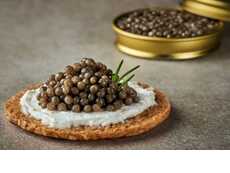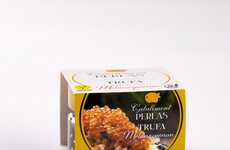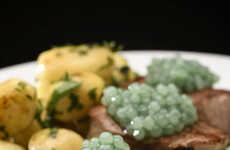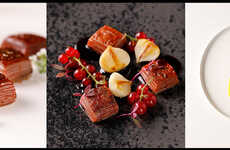
This Hi-Tech Machine Uses Seaweed to Transform Foods into Edible Caviar
References: kickstarter & mashable
The team at Mashable recently tested out the Imperial Spherificator, a machine that can turn almost any food into tiny caviar balls, on animal flesh to test out the result and see if they could create meat pearls. The process highlights the use of molecular gastronomy to transform the aesthetic of foods into new textures.
The machine works by using seaweed and calcium chloride to transform the shape of foods and turn them into caviar-like beads. The Mashable team went as far as creating bacon meat pearls that were topped on top of waffles covered in maple syrup. The meat was transformed into mini pastel pink pearls that retain the same flavor profile.
While creating meat pearls was successful, users do have to fiddle around with chemical contents to accommodate high sugar or acid content.
The machine works by using seaweed and calcium chloride to transform the shape of foods and turn them into caviar-like beads. The Mashable team went as far as creating bacon meat pearls that were topped on top of waffles covered in maple syrup. The meat was transformed into mini pastel pink pearls that retain the same flavor profile.
While creating meat pearls was successful, users do have to fiddle around with chemical contents to accommodate high sugar or acid content.
Trend Themes
1. Molecular Gastronomy - The use of molecular gastronomy techniques to transform the aesthetic of foods into new textures presents disruptive innovation opportunities for chefs and food manufacturers.
2. Food Transformation - The development of machines like the Imperial Spherificator that can turn various foods into caviar-like beads opens up disruptive innovation opportunities in food presentation and texture.
3. Edible Innovation - The creation of meat pearls using seaweed and calcium chloride showcases the potential for edible innovation, providing unique culinary experiences and product differentiation.
Industry Implications
1. Culinary Arts - The culinary arts industry can explore disruptive innovation opportunities by adopting molecular gastronomy techniques to create visually stunning and texturally diverse dishes.
2. Food Manufacturing - Food manufacturers can leverage the technology behind machines like the Imperial Spherificator to develop novel products with innovative textures and presentations, catering to evolving consumer preferences.
3. Specialty Food Products - Specialty food product companies can capitalize on the trend of edible innovation by introducing unique offerings such as meat pearls, creating a niche market segment for consumers seeking novel culinary experiences.
3.6
Score
Popularity
Activity
Freshness























